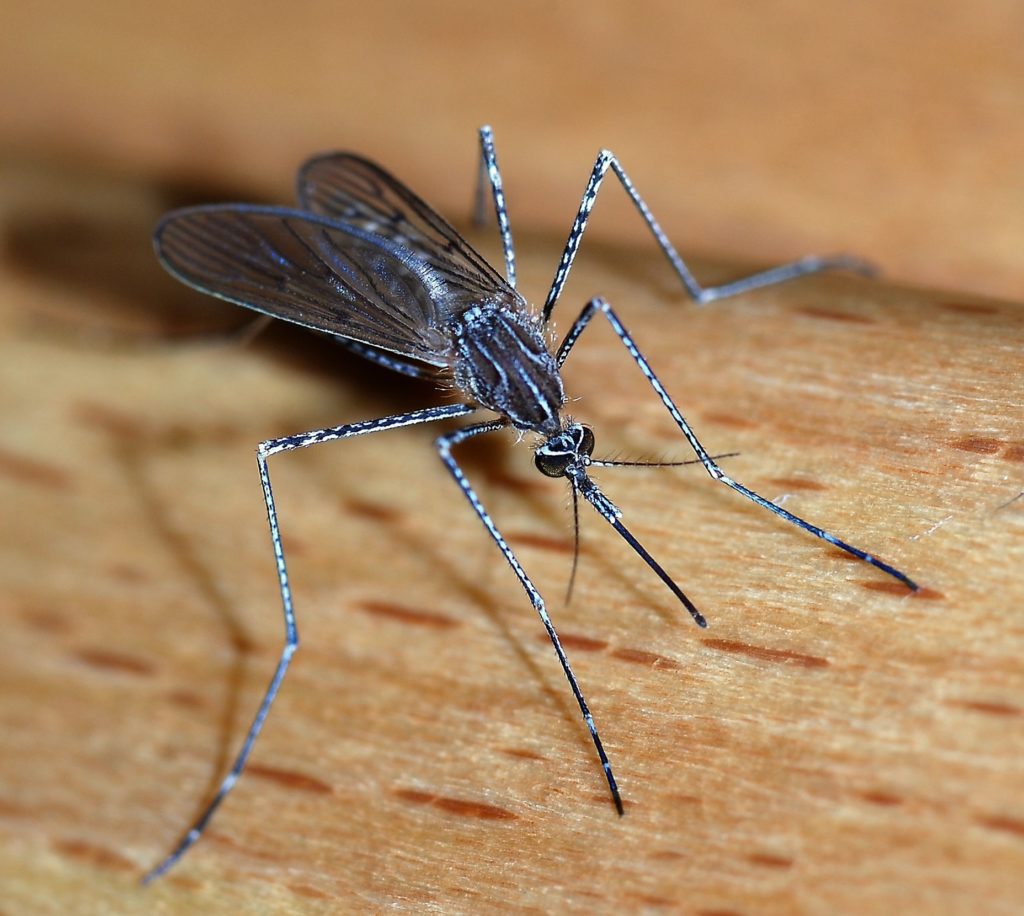
By Sammie Ann Wicks
You know that kiddie pool in your backyard, the one the kids splash in so happily? Make sure it’s completely empty of water when they’re done or you might find yourself on the receiving end of a nasty mosquito bite.
Ditto for the empty flower pots or small depressions in your lawn that tend to gather small quantities of water from your sprinkler system.
As temperatures in Tempe and West Chandler climb, the Maricopa County Department of Health is cautioning residents about mosquito infestations.
West Nile Virus infections continue to climb from their upward trend that started in 2004, say analysts at the county.
“We had a couple of cases of West Nile in 2003, but 2004 is when it really kicked in,” says Melissa Kretschmer, a county epizoologist who monitors and reports on the incidence and spread of the sometimes-lethal illness.
The department’s statistics show a continuing increase in reported West Nile infections in every year since its quasi-start in 2004, and 2019 is no exception.
“Our data show this year, 2019, there have been 27 cases of West Nile and one case of St. Louis Encephalitis in the County, as compared to 24 total cases in 2018, of which six resulted in deaths,” Kretschmer reports.
In spite of the seriousness of the West Nile virus and its continuing growth throughout Arizona, the epizoologist stresses one aspect in its control is paramount: preventing the disease in the first place.
“We keep advising people to be on the lookout for standing water where they work, at home, wherever,” Kretschmer says, “because that’s where the female mosquito lays her eggs.”
To be certain of destroying the eggs, however, Kretschmer stresses it’s not enough just to dump out water standing in plant trays, pet bowls, tree hollows—or anywhere water can collect.
“You really need to scrub out those containers and other water collectors,” Kretschmer warns, “because the eggs can stay viable in the dish even after the water has been emptied. Nothing really fancy–just get something like a sponge and wipe out the container really well.”
Prevention starts with preventing mosquito proliferation, she adds, but must be accompanied by resolute action to keep yourself and your loved ones from being bitten.
“We can’t emphasize enough that people apply effective repellant before going outside, and wear protective clothing like long-sleeved shirts,” advises Kretschmer, “in the acknowledgement that you can be bitten at any time.”
Maricopa County’s Environmental Services Vector Control Division regularly monitors its some 800 mosquito traps, collecting and testing Cylex mosquitos (one of the most common in Arizona) for West Nile and St. Louis Encephalitis; and Aedes Aegypti mosquitos for such viruses as Chikungunya, Dengue, and Zika. (The county has only found travel-related infections of these last three.)
Kretschmer goes on to say mosquitos are only one component of the infection cycle.
“Birds bitten by mosquitos help spread the virus significantly, even dead ones,” she says, noting that birds can contract and die of the virus.
The Arizona Department of Agriculture notes, however, that humans (and horses), once infected, do not transmit the virus and are therefore regarded as “dead end” hosts.
The Centers for Disease Control and Prevention reports most people infected with the West Nile virus will not experience any symptoms; but adds about 20 percent of infections may result in more unpleasant symptoms like joint pain, muscle aches, headache, vomiting, diarrhea, and rash.
Most sufferers with these symptoms, the CDC says, will recover completely, but may continue to experience fatigue and weakness for weeks, or even months.
The center also cautions one in 150 people infected with the virus— frequently those over 60, or those with a preexisting health condition—are vulnerable and may develop more serious symptoms like inflammation of the brain (or of the membranes surrounding the brain and spinal cord), which can lead to death.
“The possibility that this disease can manifest in a more life-threatening form is what makes us repeatedly stress prevention,” says Kretschmer.
“To breed, mosquitos need warmth and water, two things Arizona provides in abundance, so prevention is key.”

